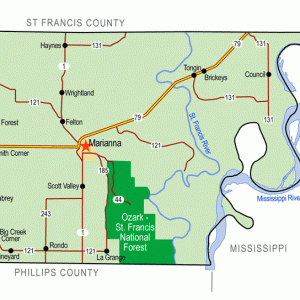calsfoundation@cals.org
Haynes (Lee County)
| Latitude and Longitude: | 34°53’27″N 090°47’31″W |
| Elevation: | 220 feet |
| Area: | 0.35 square miles (2020 Census) |
| Population: | 122 (2020 Census) |
| Incorporation Date: | February 25, 1889 |
Historical Population as per the U.S. Census:
|
1810 |
1820 |
1830 |
1840 |
1850 |
1860 |
1870 |
1880 |
1890 |
1900 |
|
– |
– |
– |
– |
– |
– |
– |
– |
255 |
– |
|
1910 |
1920 |
1930 |
1940 |
1950 |
1960 |
1970 |
1980 |
1990 |
2000 |
|
– |
– |
– |
– |
– |
– |
– |
359 |
268 |
214 |
|
2010 |
2020 |
|
|
|
|
|
|
|
|
|
150 |
122 |
|
|
|
|
|
|
|
|
Haynes is a town in north-central Lee County, about one mile from the St. Francis County line and two miles from the L’Anguille River. Cotton and the railroad brought Haynes into existence, but the town’s population has varied over the years.
Before Arkansas became a state, its eastern Delta region was dotted with large cotton plantations, with a slave population that largely outnumbered the white landowners. Several homes were built in the area that would become Haynes from the 1820s to the 1840s. Stores, a Baptist church, and a school for white children had already been established by 1850. The Civil War changed the economy of the region, bringing an end to slavery, but the African-American tenant farmers of the area lived much the same lives as their enslaved ancestors had. Lee County was established in 1873, and railroads were soon built across the county. The Iron Mountain Railroad built a line that ran through the settlement, connecting Marianna (Lee County) to Forrest City (St. Francis County). A railroad depot was erected, bearing the name of station master Joseph Haynes. When a post office was established in 1881, local citizens first sought to have it called Bailey, but the name was changed to Haynes in 1883. Likewise, when the town was incorporated in 1889, the name of the town was debated, but once again Haynes won over the competition.
By 1888, the incipient town reportedly had a population of 350. The town had five general stores, two drugstores, a hotel, a bank, two blacksmith and wagon shops, a millinery shop, and an undertaker. A Methodist church was under construction, and there were two Baptist churches, one for whites and one for African Americans. A school for black children was also operating by that year. Two stream-operated sawmills and three cotton gins supported the workers of the community; 5,000 bales of cotton were shipped from Haynes in 1888, according to the Goodspeed history of the county. That source describes Haynes as “one of the most thrifty and progressive of places.” An Elks lodge met above one of the stores, sponsoring dances that brought revelers by train from Forrest City and Marianna. Sidewalks were built in the 1890s, and the town had four liquor stores during that decade. Robert Donnelly, an African-American man, was lynched in Lee County on June 29, 1892.
The Depression hampered the cotton industry and the railroad industry, and many workers left Haynes to seek employment elsewhere. By 1930, the city contained only five stores, a blacksmith shop, a post office, and two cotton gins. During the 1930s, citizens allowed the incorporation of their town to lapse. Arkansas’s highway development reduced the need for rail traffic. Highway 1 ran through Haynes (as it still does in the twenty-first century), paralleling the Iron Mountain tracks, making the railroad less needed for passenger traffic or light freight. In the early 1960s, the Methodist church disbanded. About the same time, the schools closed, consolidating into the desegregated Marianna school system.
After 1970, the population began to increase, and the town was reincorporated. By the 1980 census, the population had again surpassed 350. In addition to the post office, the town had a fire station, a cotton gin, two stores, a blacksmith shop, and two churches. Streets had been paved by 1984, and a water and sewer system had been built. After that time, though, the population again diminished. By the 2010 census, the town of Haynes was down to 150 citizens—sixteen white and 134 black. The town was at that time home to the two Baptist churches, the post office, and the fire department.
Robbie Gill Comer, one-time leader of the Women of the Ku Klux Klan, was born in Haynes.
For additional information:
Baker, Russell. Arkansas Post Offices: From Memdag to Norsk, A Historical Directory 1832–1990. Rev. ed. Little Rock: Arkansas Genealogical Society, 2006.
The Goodspeed Biographical and Historical Memoirs of Eastern Arkansas. Chicago: Goodspeed Publishing Co., 1890.
Lee County Sesquicentennial Committee. Lee County History. Dallas, TX: Curtis Media Company, 1987.
Steven Teske
Butler Center for Arkansas Studies
 Lee County Map
Lee County Map 



In searching for my family history, I found that Haynes was called Union at one time. Last names: NELSON, HOWERTON, HONEYCUTT